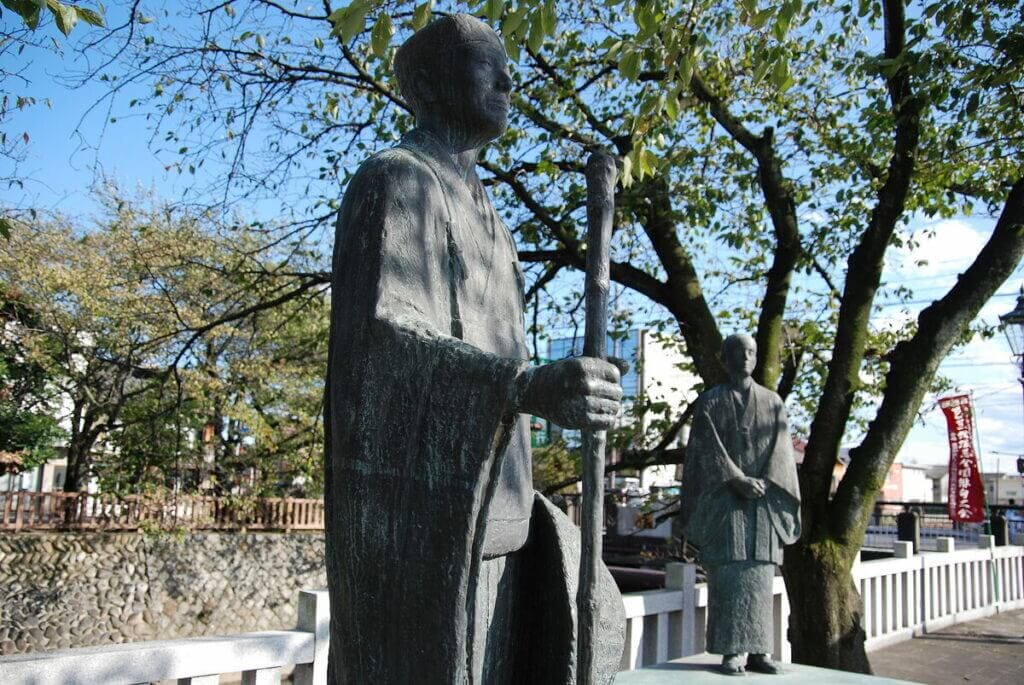Traditional haiku consists of three lines with 5, 7, and 5 syllables respectively, although modern haiku poets often deviate from this structure.
The form’s brevity and focus on capturing a moment in nature have made it a popular form of expression not only in Japan but also in other parts of the world.
Haiku’s Influence on Japanese Poetry
Japanese poetry has a rich history that spans over a thousand years. It encompasses various forms such as tanka, renga, and haikai, each with its unique structure and style.
Haiku was first introduced as part of “haikai no renga,” a collaborative form of poetry in which poets took turns composing stanzas. The 17-syllable verse, known as hokku, which eventually became Haiku, served as the opening stanza of haikai no renga.
Haiku’s impact on Japanese poetry was significant. The form’s focus on capturing a moment in nature in just a few words brought a new dimension to Japanese poetry.
Matsuo Bashō, one of Japan’s most famous poets, is credited with revolutionizing the Haiku form. He infused it with a sense of Zen philosophy and incorporated elements of humor and irony.

His best-known haiku is ‘The old pond,’ which describes a frog jumping into pond water and the splash it makes. The English translation of the poem reads:
Old pond…
a frog jumps in
water’s sound
His famous work, The Narrow Road to the Deep North, or Oku no Hosomichi, is a collection of travel sketches and Haiku that reflect his experiences on a journey to the north of Japan.

Other notable haiku poets in Japan include Yosa Buson and Kobayashi Issa, whose works also contributed to the form’s development and popularity. One of Issa’s best-known poems is ‘Everything I touch.’ It reads:
Everything I touch
with tenderness, alas,
pricks like a bramble
Haiku’s Influence on Western Poetry
Haiku was first introduced to the West in the late 19th century through the translations of Japanese poetry. The impact of haiku on Western poetry has been significant. The form’s brevity and focus on nature and the present moment resonated with Western poets who were seeking a more direct and concise way of expressing themselves.

The Imagist movement in the early 20th century, which emphasized the use of precise and concrete images, was heavily influenced by haiku. Poets such as Ezra Pound, William Carlos Williams, and H.D. all incorporated haiku elements into their work, creating a new style of poetry that emphasized clear and vivid images.
For example, Pound’s ‘In a Station of the Metro’ is often regarded as a variation of a haiku. It’s only two lines long and starts with “The apparition of these faces in the crowd.”
In more recent times, poets such as Jack Kerouac and Allen Ginsberg were also influenced by haiku and wrote some of the best haiku to read today. They embraced the form’s spontaneity and Zen philosophy.
Haiku has also influenced contemporary poets such as Gary Snyder, who has written extensively on Zen and nature, and Mary Oliver, who often uses haiku-like structures in her poetry.
Haiku’s Global Influence on Poetry
Haiku’s influence on poetry extends beyond Japan and the West. The form’s simplicity and focus on capturing the essence of a moment in nature have inspired poets from different cultures and countries around the world.
Haiku’s structure and themes have also influenced diverse styles of poetry in the West and beyond. In addition to the Imagist movement, haiku has influenced the development of free verse poetry and other forms of experimental poetry that emphasize the use of concrete imagery and sensory details.
The Evolution of Haiku
Haiku has evolved over time and across cultures, with different poets and writers adapting and modifying the form to suit their artistic goals and cultural contexts.

In Japan, for example, the traditional 5-7-5 syllable structure has been challenged and modified by poets who sought to push the boundaries of the form. Contemporary Japanese haiku often uses fewer syllables and experiments with new forms and structures.
In the West, haiku has also undergone changes and adaptations. Some poets have moved away from the strict 5-7-5 syllable structure and focused on capturing the essence of a moment in nature rather than adhering to a specific form.
Others have experimented with combining haiku with other forms of poetry or using haiku-like structures in their writing.
Despite these changes, haiku remains relevant in modern poetry. Its focus on the present moment and the beauty of nature continues to resonate with contemporary poets and readers. Haiku’s brevity and clarity also make it an attractive form of poetry for writers looking to convey complex emotions and ideas in a concise and direct way.
FAQs
Haiku are important because they offer a unique form of expression that focuses on capturing the essence of a moment in nature. Their brevity and clarity make them an effective way to convey complex emotions and ideas in a concise and direct way.
Poets write haiku for many reasons. Some are drawn to the form’s simplicity and focus on capturing the beauty of nature and the present moment. Others appreciate the challenge of working within the constraints of the form’s syllable count and structure.
Haiku are typically about nature and the beauty of the present moment. They often focus on capturing a specific scene or image in nature and using it to explore deeper emotions and ideas. Haiku can also be about the impermanence of life and the fleeting nature of beauty, as well as the importance of mindfulness and being present in the moment.
There have been many famous haiku poets throughout history, some of whom include: Matsuo Basho, Yosa Buson, Kobayashi Issa, and Masaoka Shiki.








